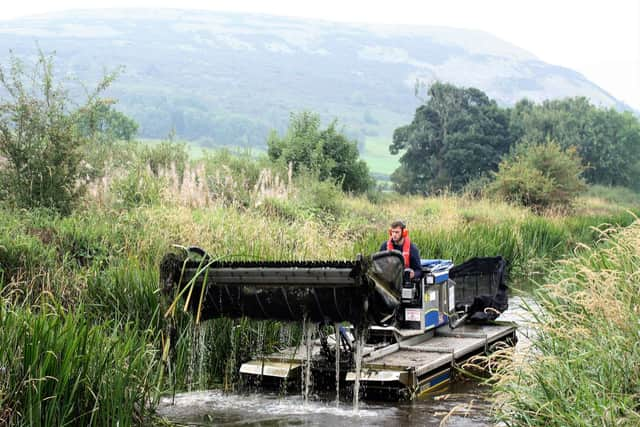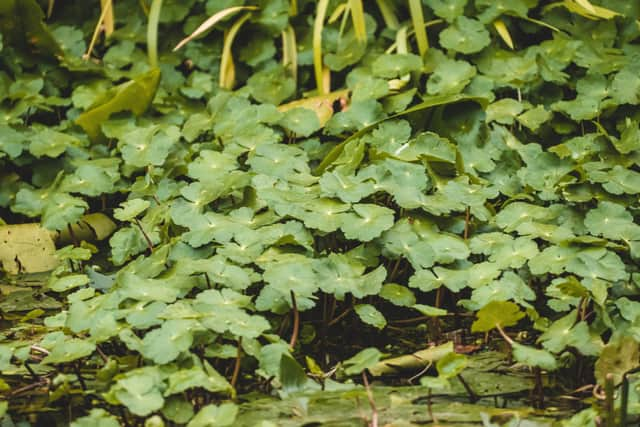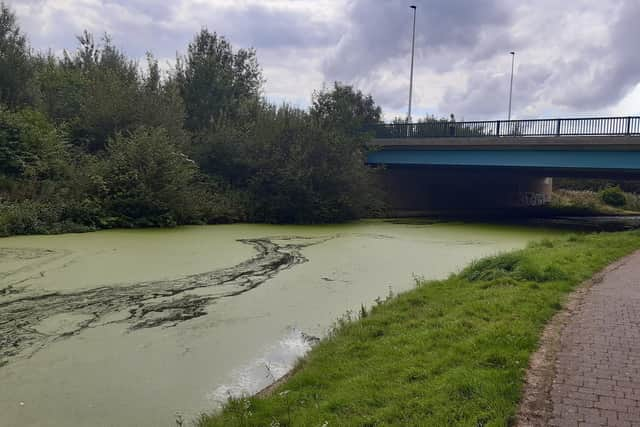Weed removal to take place on Wigan's canal as plant upsurge is blamed on climate change
and live on Freeview channel 276
The Canal and River Trust’s annual summer programme to tackle the weed across its 2,000 miles of waterways is well under way, with volunteers, staff and contractors working hard to remove the weed before it clogs up canals and destroys native wildlife.
And some of the work is taking place in Wigan: on the stretch of the Leeds and Liverpool Canal between Top Lock at New Springs and Adlington in Chorley.
Advertisement
Hide AdAdvertisement
Hide Ad

Over the coming months the charity will need to invest over £1.1m to remove more than 2,500 tonnes of invasive weed – equivalent to 14.5 blue whales - across its entire network.
Physically removing the weed is the quickest way to deal with the phenomenon, and the Canal and River Trust teams, contractors and volunteers across England and Wales have launched a fleet of boats to scoop up the weed and take it out of the water.
The charity’s North West region is an area of concern, with £109,000 being invested to remove problematic aquatic weeds such as floating pennywort.
The local operations team is clearing weeds with a Truxor amphibious weed boat which will be working betwen locks 58 to 68 (Wigan to Adlington soon).
Advertisement
Hide AdAdvertisement
Hide Ad

Aquatic weeds such as duckweed, floating pennywort and azolla grow extremely quickly. Azolla can double in size every three days, while some of the fastest-growing weeds can double in size within a matter of hours. Left unchecked, the weed causes problems for boats, rowers and anglers. It starves water plants of light, sucks up the oxygen fish need to breathe and, in turn, is damaging to much-loved species such as kingfishers and otters.
The trust says warmer summers are increasing the growing months for invasive aquatic weeds, causing canals, rivers, ponds and pools to turn a vibrant shade of green. Forming a mat across the surface of the water, the weed accumulates unsightly litter and, while not directly harmful, people, dogs and other animals have been known to mistake it for grass and ended up in the water.
The proliferation of weed in summer isn’t new, but the hotter weather and fiercer storms whose increased frequency is blamed on climate change are making the problem worse. Weed likes high temperatures, along with plenty of rain that washes nutrient from the surrounding area into the waterways – with the recent weather providing ideal spreading conditions.
Trust regional director Jon Horsfall said: “The changing climate, with hotter summers becoming more common, is making this natural phenomenon an even greater challenge. Although the weed isn’t harmful, it needs to be contained. Left unchecked it causes problems for boaters, rowers, anglers and our wildlife, which call the canals home.
Advertisement
Hide AdAdvertisement
Hide Ad

“The weed also looks unappealing and is often studded with the litter that gets blown into the water from the streets. Our canals and rivers are wonderful places to visit, and are especially popular in summer, so it’s important to keep them looking their best.
“A recent decision by government to cut future funding for the nation’s canal network is going to make winning our battle against aquatic weed even harder.